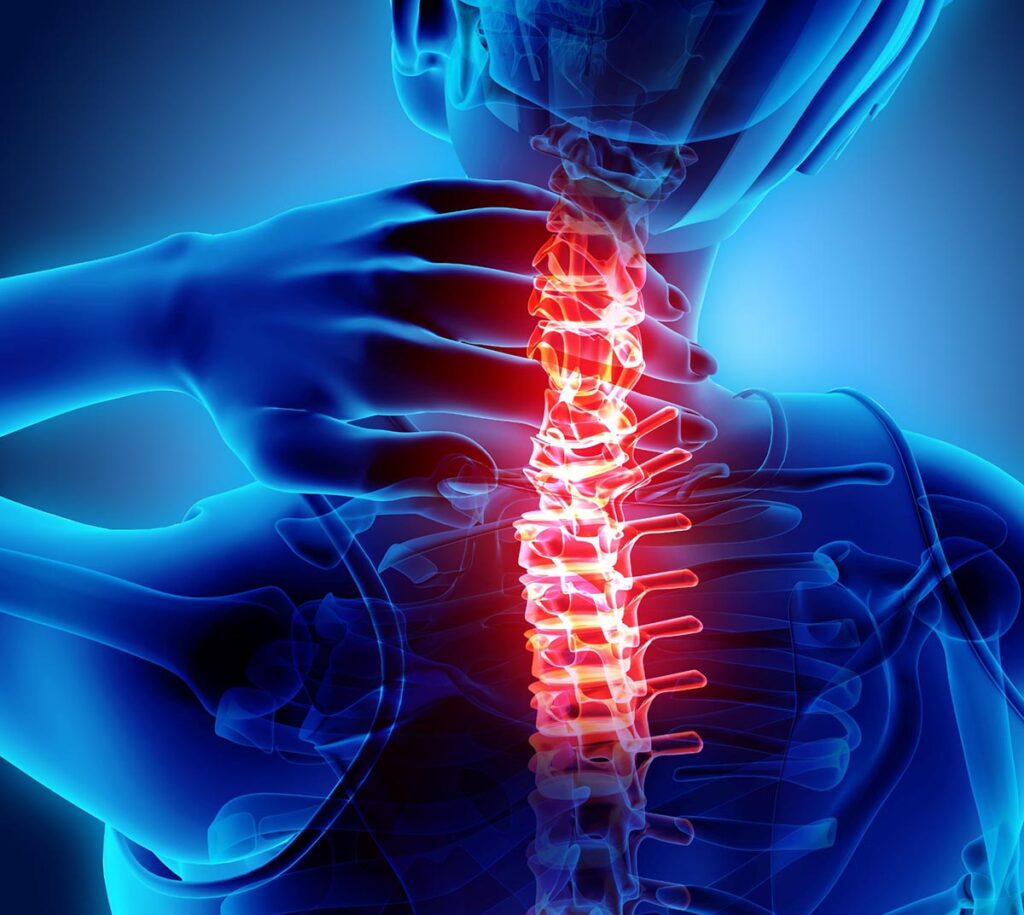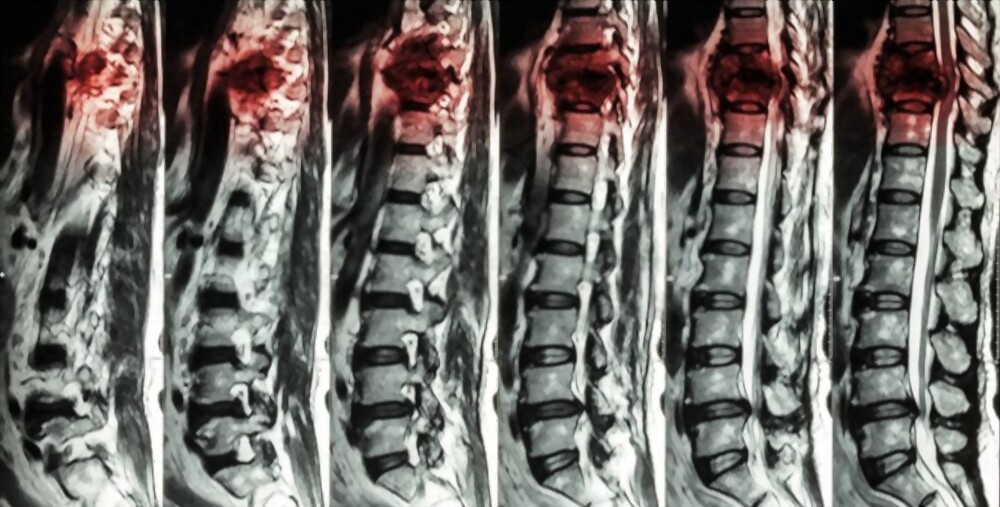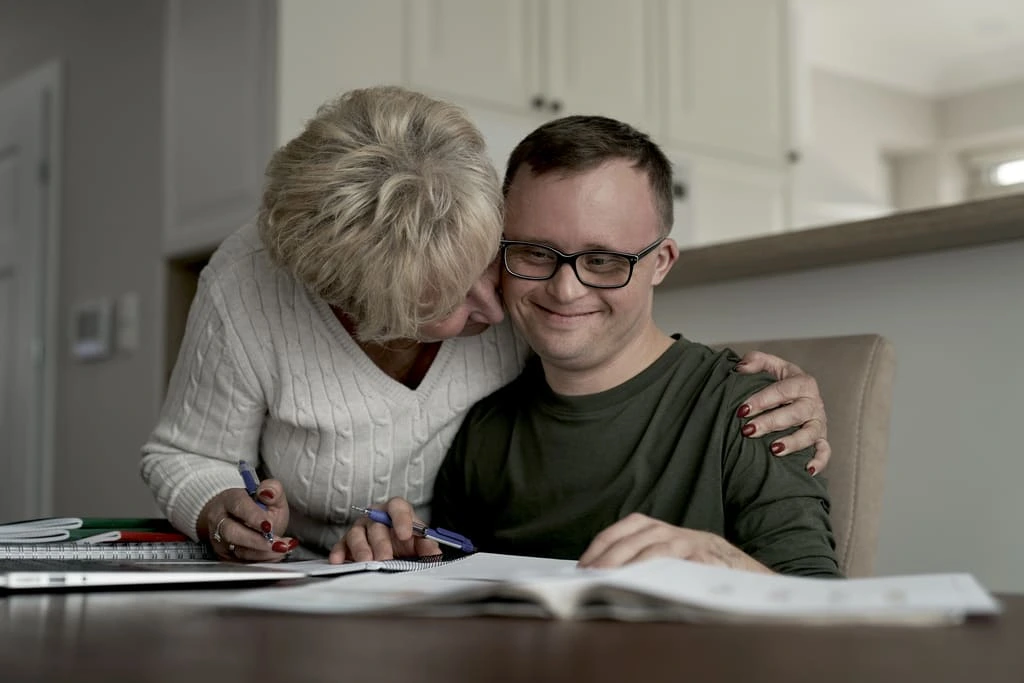What is Spinal Cord Injury?
The spinal cord is a long tube-like structure stretching from the lower part of the brainstem to the lower back. It contains tightly bundled nerve cells responsible for transmitting signals between the brain and the rest of your body. A spinal cord injury can affect a wide range of bodily functions by disrupting this transmission.
Spinal cord damage may occur due to an acute spinal cord injury or a traumatic injury of the bones and tissue surrounding the spinal cord. These injuries may result in temporary or permanent changes in motor or sensory function, physical disability, voluntary muscle movement, and stamina. A spinal cord injury can affect several, many, or most of the nerve cells around the site of the traumatic blow. There is a possibility for an almost total recovery in patients with slight to no nerve cell death.
The site, type, and severity of the injury determine the level of disability it may cause.
- If the injury occurs in the higher parts of the spinal cord, it may lead to tetraplegia (paralysis in all four limbs and torso)
- If the injury occurs in the lower spinal cord, it may lead to paraplegia (paralysis in the legs and lower part of the body)
A more specific classification distinguishes thoracic, lumbar, sacral, and cervical spinal cord injuries. Depending on its severity, patients can suffer a complete or incomplete injury to the spinal cord.
Complete Spinal Cord Injury
A complete injury to the spinal cord may permanently damage the affected part of the spinal cord. These injuries cause a complete loss or impairment of motor and sensory functions in body parts below the level of the trauma. As a result, patients experience a loss of sensation and muscle function on both sides of the body. Complete spinal cord injuries can cause paraplegia or tetraplegia.
Patients with complete spinal cord injury are less likely to reach full recovery. However, adequate medications and prostheses may improve the function of the nerves and increase the patient’s quality of life in general. Treatment from a dedicated care team allows people with these injuries to regain independence and lead fulfilling lives.
Incomplete Spinal Cord Injury
An incomplete injury to the spinal cord causes partial impairment of the bodily functions below the injury site. Individuals with an incomplete spinal cord injury can retain certain levels of sensation and muscle movement. These injuries may have an unequal effect on different sides of the body. For instance, some people might be able to move one arm or leg more easily than the other.
Medical trials suggest that patients with an incomplete spinal cord injury have a higher possibility of regaining sensory and motor function in the affected muscle groups than those with a complete spinal injury.
Spinal Cord Injury Symptoms
Acute spinal cord injury may cause a wide range of symptoms. The nature and severity of the symptoms depend on where the injury occurred and which body parts it affects. The following signs indicate that you require medical attention after a traumatic spinal cord injury:
- Chronic pain in the neck, head, and back
- Muscle weakness and loss of the ability to walk
- Impairment of balance and coordination
- Numbness, swelling, and tingling in the arms or legs
- Breathing difficulties
- Impaired bowel or bladder function
- Elevated blood pressure

Spinal Cord Injury Paralysis
Spinal cord injury paralysis is a loss of muscle function due to disrupted communication between the brain and spinal cord with the affected muscle groups. The level and severity of the spinal cord injury determine the type of paralysis. Immediate diagnosis and quality treatment are crucial in preventing complications from spinal cord injury paralysis.
There are two main types of paralysis caused by spinal cord injury – tetraplegia (which affects the upper and lower parts of the body) and paraplegia (specifically affecting the lower extremities).
Tetraplegia
Tetraplegia (also known as quadriplegia) is defined as an inability to perform voluntary movement of the upper and lower body parts. The impairment of mobility usually affects multiple areas, including the chest, arms, hands, fingers, legs, feet, and toes. In some cases, this type of spinal cord injury paralysis may also affect the patient’s head, neck, or shoulders.
Tetraplegia may lead to chronic pain, pressure ulcers, damage to the respiratory muscles, urinary tract infections, and other complications. Therefore, people with this condition require long-term, dedicated support from trained care professionals.
Paraplegia
Paraplegia is a form of spinal cord injury paralysis that prevents voluntary movement in the lower parts of the body. This condition causes impaired mobility in the legs, feet, toes, and sometimes the abdominal muscles. The level of disability in patients with paraplegia may vary from case to case, which means that each individual requires personalised treatment according to their needs.
Access to quality rehabilitative treatment can help patients with paraplegia regain some functionality and live as independently as possible. While most individuals with paraplegia remain reliant on a wheelchair, physiotherapy may allow them to improve their transfer skills, range of motion, and strength.
Causes of Spinal Cord Injury
Based on what caused a spinal cord injury, it can be traumatic and nontraumatic. Traumatic injuries refer to an abrupt hit to the spine, while nontraumatic injuries refer to internal damage.
Spinal cord injuries can result in primary and secondary damage, i.e. the immediate cell death caused by the original injury, and further tissue damage caused by biochemical cascades initiated during the incident.
In most cases, spinal cord injuries occur when the spine or neck area suffers compression due to the following causes:
- Motor vehicle accidents (car accidents, motorcycle accidents, and getting struck as a pedestrian)
- Sports injuries
- Acts of physical violence (stabbing or gunshot wounds)
- Brain infections forming an abscess on the spinal cord
- Perinatal physical trauma in the neck area or spinal cord
- Surgical injuries
- Various neurological disorders (tumours, arthritis, osteoporosis)


How is a Spinal Cord Injury Diagnosed?
In the case of a suspected spinal cord injury, the doctor will initially assess the patient’s vital functions, including his respiration, heartbeat, and pulse.
After that, the acute care team evaluates the person’s neurological functions. In this part of the urgent assessment, the physician tests the sensation and strength in the patient’s arms and legs. If the patient is not fully aware of their surroundings or shows apparent weakness, the doctor keeps them on a spine board and a rigid cervical collar until the completion of the assessment.
Doctors perform a radiological evaluation to confirm the diagnosis and further assess the nature of the injury. With the technological advancement of medical equipment in most hospitals, physicians scan the entire spine through a computerised tomography (CT or CAT scan). This helps the medical team identify fractures and other abnormalities affecting the patient’s bones.
Furthermore, doctors also perform MRI scans (magnetic resonance imaging) on individuals with suspected or confirmed spinal injuries. An MRI scan can detect possible herniated discs, blood clots, and other factors that cause compression of the spinal cord.
Spinal Cord Injury Treatment
Emergency services or other acute care providers initially treat acute spinal cord injuries before patients reach a medical facility. At the scene of the accident, they make sure the individual’s spine is entirely immobilised to prevent further damage.
Once the patient is admitted to the hospital, the doctors identify and address any immediate and life-threatening problems linked to the injury. Depending on the level of the damage, the patient may require emergency surgery or only benefit from non-surgical treatment.
Patients with less severe spinal cord injuries are still transferred to the ICU (intensive care unit). Many cervical spine injuries require traction to bring the spine back into proper alignment. Moreover, standard intensive care includes monitoring cardiovascular function, keeping blood pressure stable, maintaining proper ventilation and respiratory function, and preventing possible infections or other complications. These care services are crucial for the long-term prognosis of spinal cord injury.
Patients with severe spinal cord injury (involving spinal cord compression by blood clots, a herniated disc, or other lesions) may require surgical treatment. Surgeons commonly take patients with spinal cord injuries to the operating room in cases of progressive neurological deterioration.
After the patient’s stabilisation, further stages of treatment are focused on rehabilitative care and support. This usually includes physical therapy, occupational therapy, and mental health counselling for emotional support.
How Leaf Complex Care Can Support People with Spinal Cord Injuries
At Leaf Complex Care, our mission is to provide exceptional treatment to individuals with complex care needs.
Our trained practitioners can support individuals with traumatic spinal cord injuries in the comfort of their own homes. We believe everyone deserves a fulfilled life in their familiar surroundings, close to their family and friends. The Leaf Team imprints kindness, compassion, and dedication in everything we do.
As care providers, we are fully aware of the drastic impact spinal cord injuries have on every affected individual and their loved ones. Therefore, our support workers deliver medical attention according to the individual’s needs and provide emotional support for the whole family. Our personalised care plans prioritise the individual’s health needs, personal boundaries, and detailed preferences. The individual’s privacy, dignity, and improvement towards independence are of the utmost importance in our care packages.
If you are searching for a quality care provider for yourself or a loved one, don’t hesitate to contact us at Leaf Complex Care. We provide high-standard, CQC-regulated care in Bristol, South East, Somerset and the Midlands.






